
You may have heard that all three Growbags were in the Scottish Highlands for a few days last week – evading Storm Amy by a whisper before she started wreaking her havoc.
In between lovely walks,
Marvellous mulch
Along with all the cakes we ate last week, Laura and I had to consume large amounts of Humble Pie after all our mocking of Caroline’s gardening prowess over the years. Her
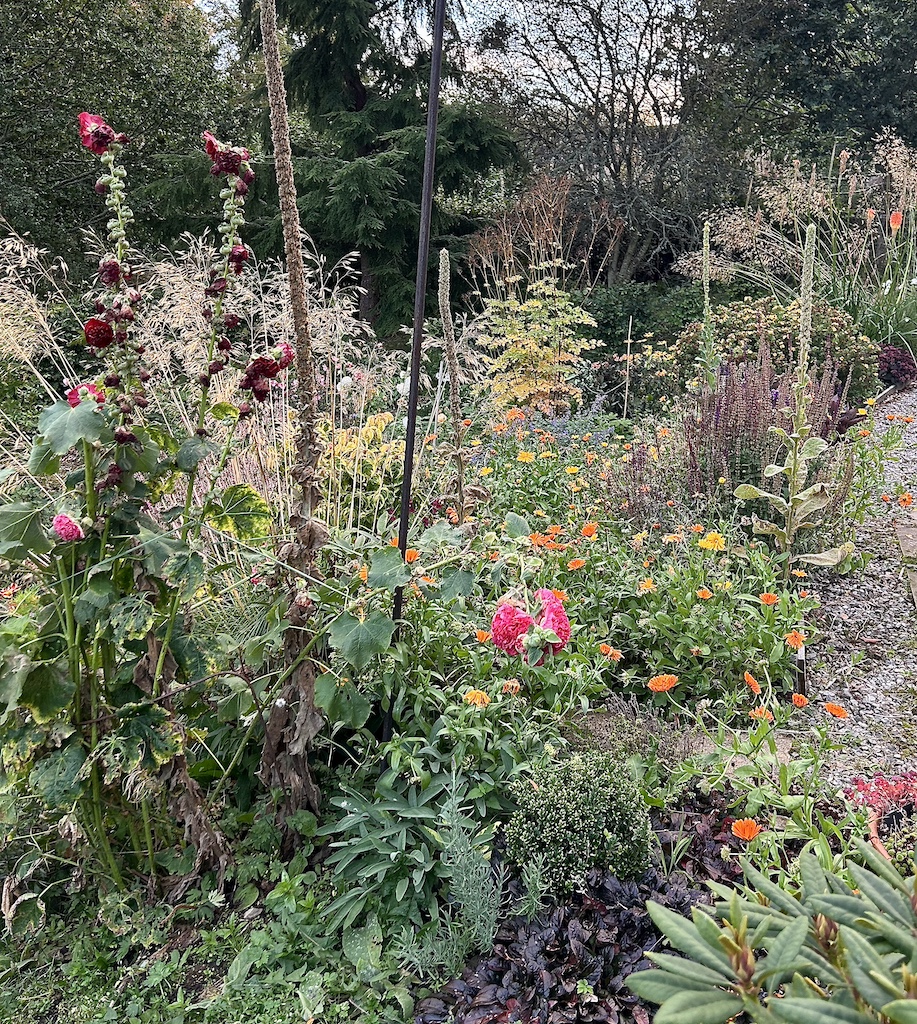
Something I particularly noticed was how much her chosen mulch of wood chippings set off the planting unobtrusively but effectively. Mulches can help a lot with invasive weeds such as the endemic ground elder that Caroline has to deal with, too. Seeing it look so good in her
While spring mulches are mostly about weed suppression and sealing moisture in ready for the summer ahead, an autumn mulch is a great way to give all the plant roots a cosy ‘rug’ against harsh winter weather, and if they are biodegradable (such as rotted manure or compost), they will also improve the soil as the worms take them downwards. If you have been cutting back lots of your perennials now their big show is over, then you’ll find that you’ve got lots more room to spread your mulch over the ground.
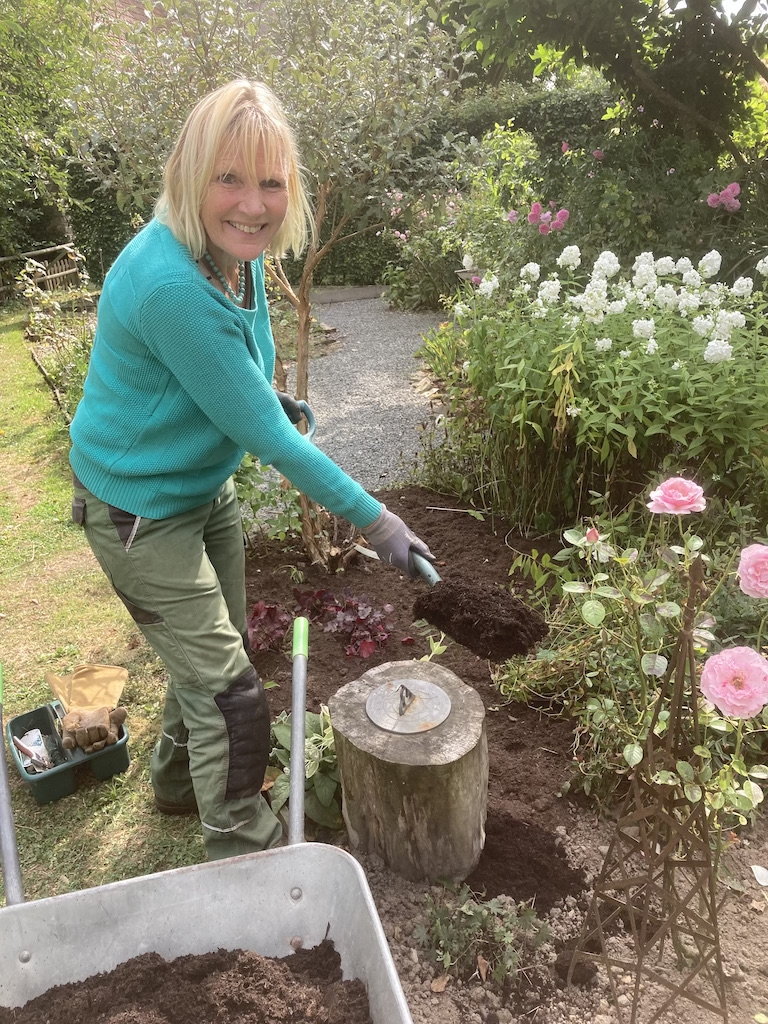
Just a word about wood chippings if that is what you’re intending to use – do let them rot down for at least six months or so (especially holly or fir clippings) before spreading them on the
Winter colour
Caroline has a great many perennials and shrubs in her
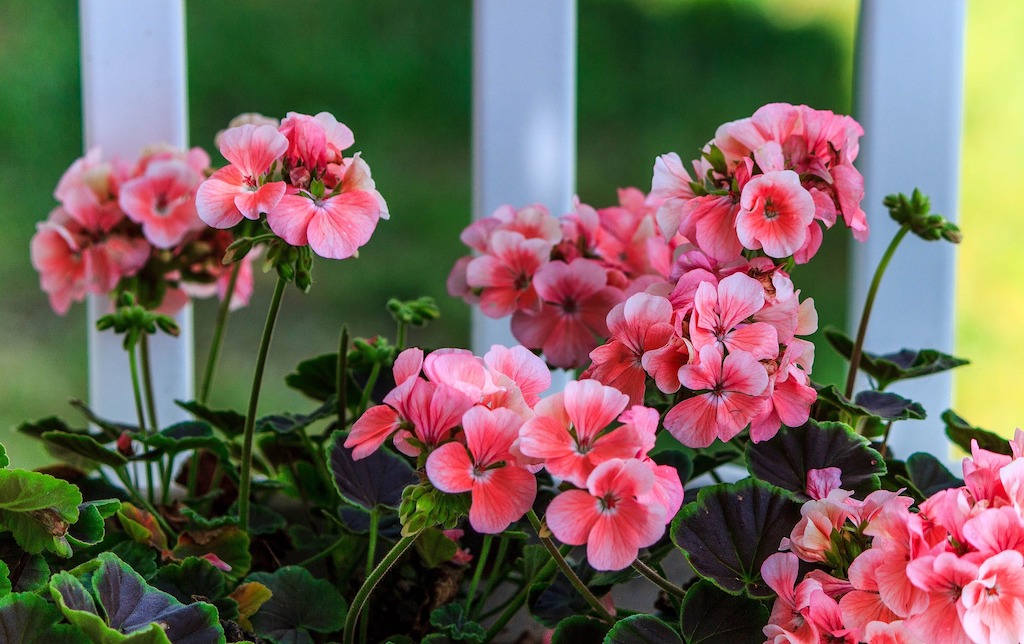
So sad to lose all that colour! But don’t sit looking at those blank spaces until spring. I heartily recommend that you go out and get some lovely autumn-colour plants like heucheras, heucherellas, carex, asters, chrysanthemums or heathers, which will give some long-lasting brightness and interest.
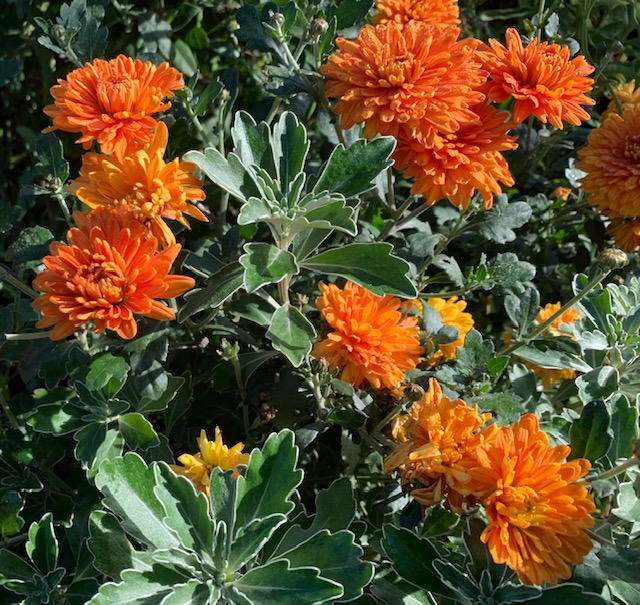
Pansies, violas, autumn-flowering cyclamen and polyanthus are inexpensive and will also put a smile on your face right through to early spring. The cyclamen that I planted in a sheltered pot in late autumn last year were still flowering the next May! Position them if you can in a place where you are likely to see them even when terrible weather is keeping you indoors all day. Or maybe in a pot right by your front door. I dare you – treat yourself and you’ll be very glad you did.
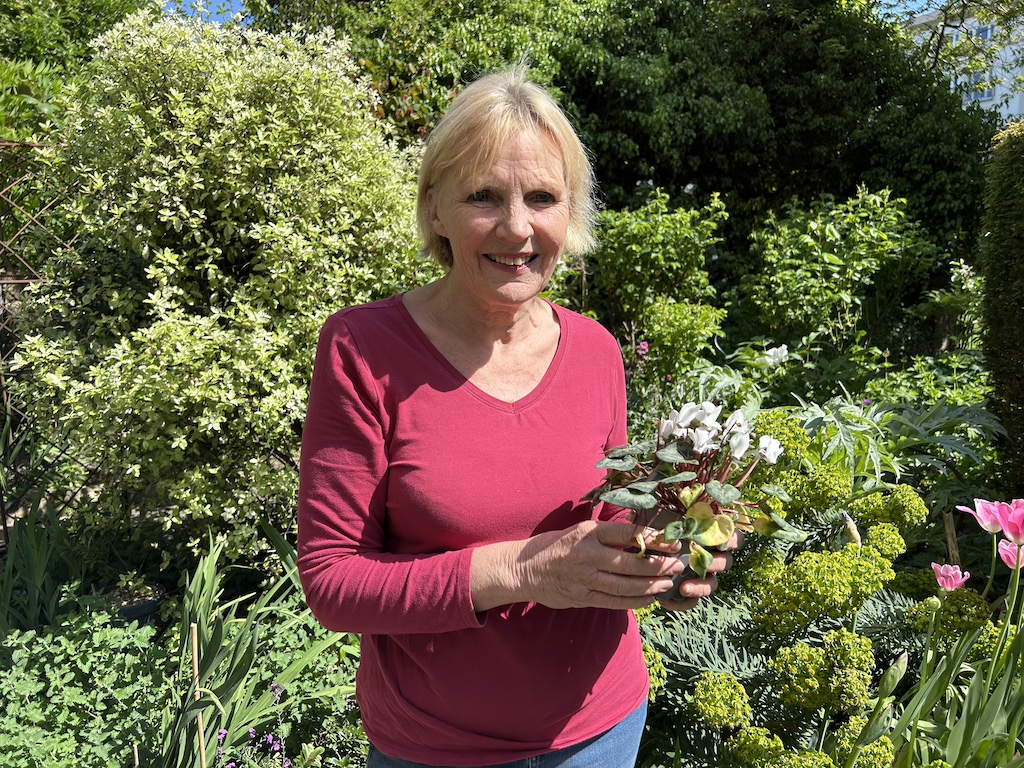
Planting bulbs
The big
There are so many lovely things to choose from – crocuses, hyacinths, daffodils and narcissi, lilies, alliums…. and the advice for planting them is fairly straightforward.
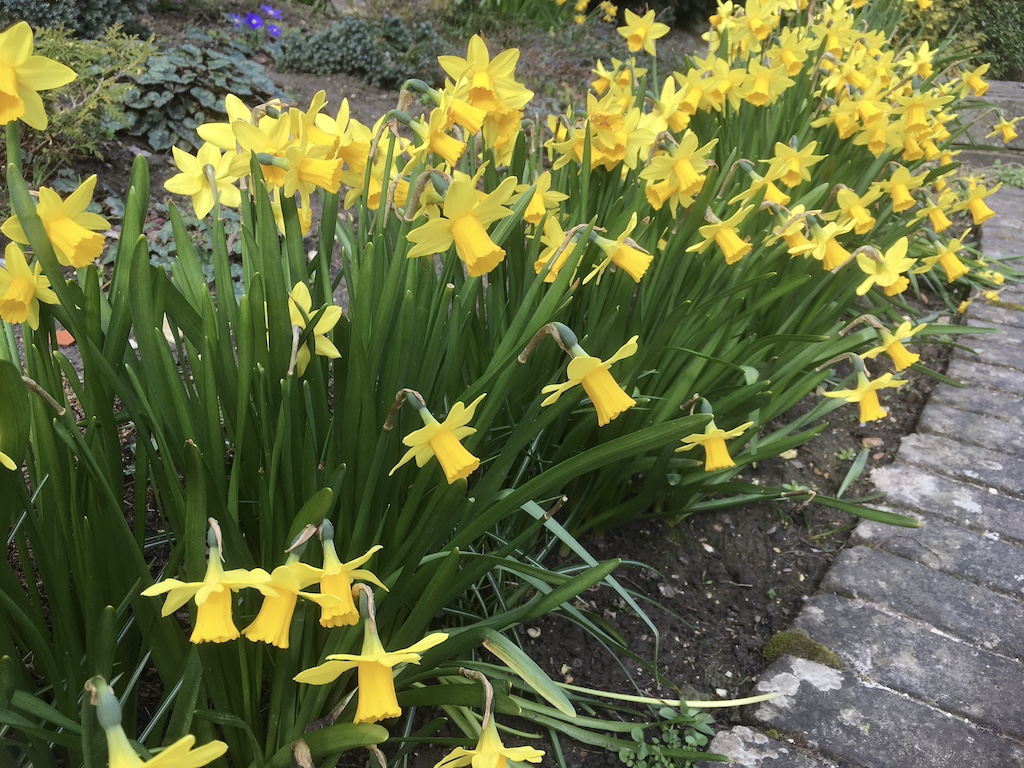
Most of these spring bulbs will rot in soggy soil, so choose a well-drained, sunny or partly-shaded area. If your soil is heavy, do mix in some grit to improve the drainage.
Plant the bulbs 2 or 3 times the depth of the bulb itself, and if in doubt go deeper rather than shallower. Hence, the bigger the bulb, the deeper the hole. Daffodils not planted deeply enough tend to produce only leaves not flowers. If you can break up the soil at the bottom of the hole a bit so much the better, or even add a little compost to give the roots a good start. If I’m planting several at the same time, I don’t backfill the holes until they are all in (so I know where I put them!), then water the area. Then, importantly, put a label in so you don’t forget where you planted them!
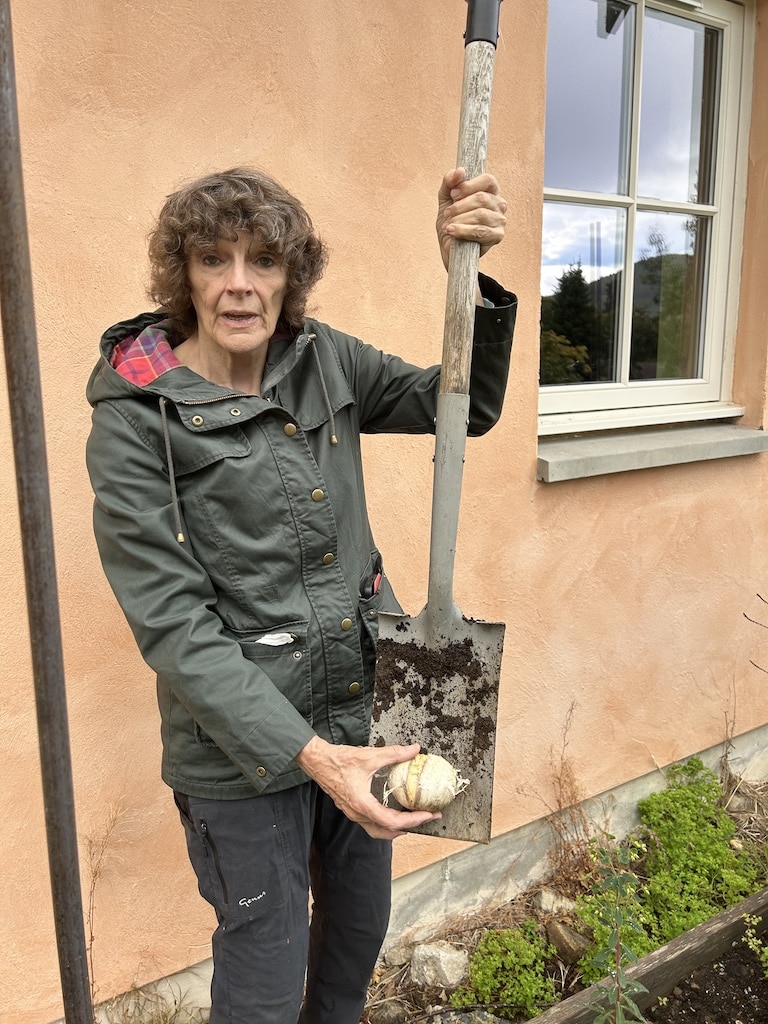
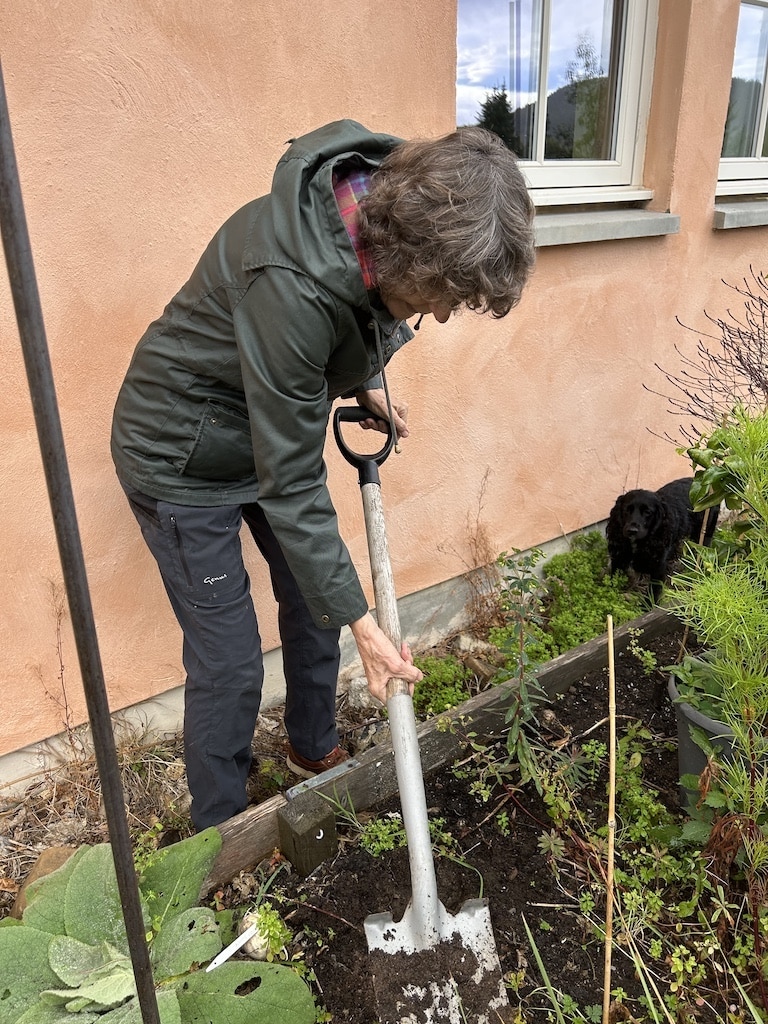
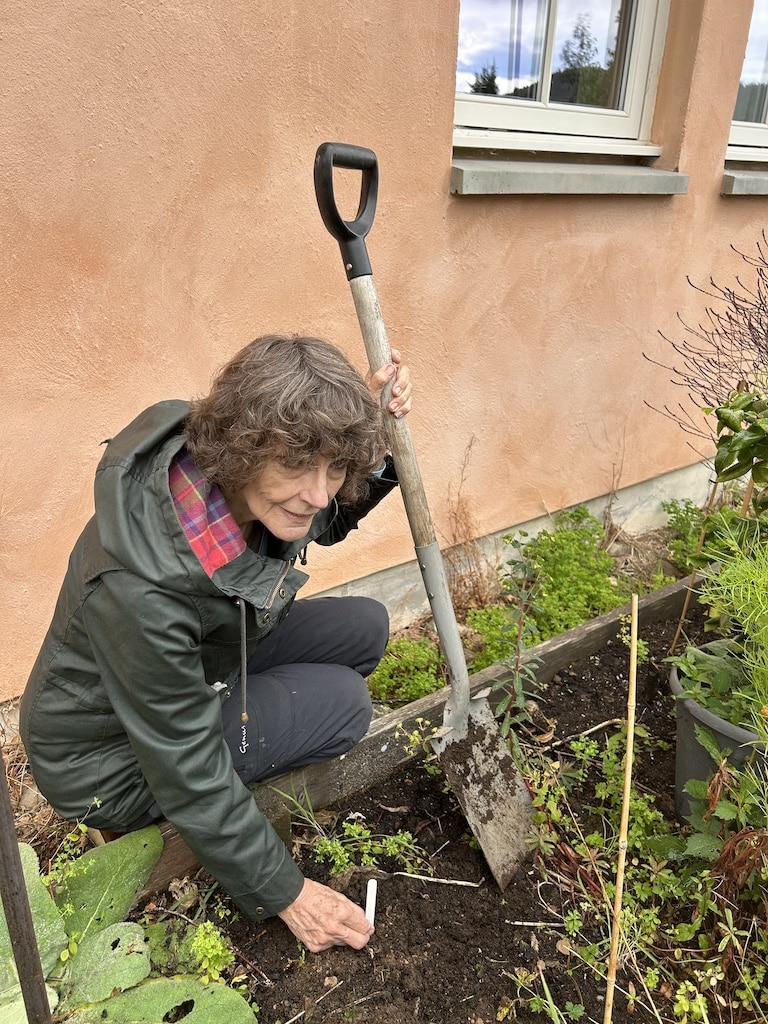
You can use a bulb-planter for the job, though I prefer a long trowel and here Caroline is using a long-bladed spade to plant big allium bulbs.
One more thing which is EXTREMELY relevant round here – if you are plagued by squirrels (or rabbits, mice, etc.) you need to deter them somehow. They are less partial to daffs, alliums and snowdrops, but adore tulips (plant these in November) and lilies, as I know to my cost 🙄. They are repelled by strong smells such as coffee grounds, mint (particularly peppermint), pepper, garlic or cayenne pepper, but I have found that unless you are prepared to keep re-applying these deterrents very regularly, the critters hold their noses and keep burrowing and chomping! The barrier that has worked best for me has been chicken wire (or in the case of pots, upturned wire hanging baskets) pegged down around the planting area. See what works best for you.

Gardening shorts
- Lots of our gardens still have summer flowers blooming like Cosmos, dahlias etc. Do continue to deadhead them – let’s get the most we can out of them before the frosts blacken them!
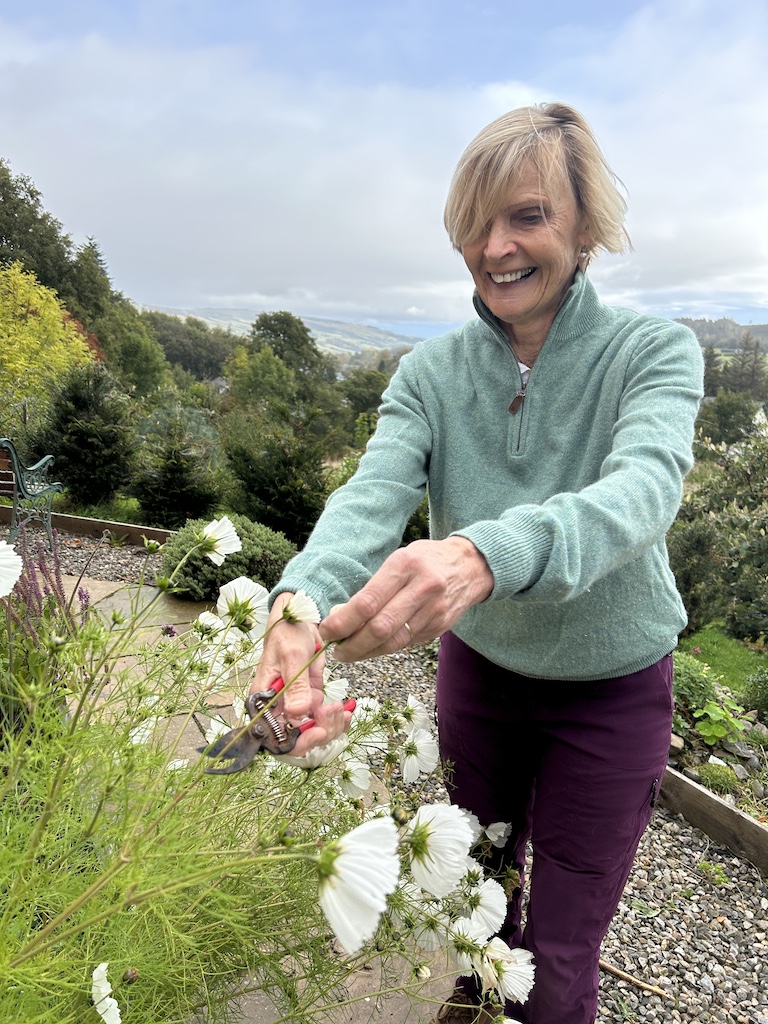
- It’s time to harvest quinces whose golden fruits are filling the
garden with scent on still days. They will still be hard to touch but can be twisted or snipped from the branch carefully (they bruise easily) and then stored in a cool, dark place for a few weeks to ripen further.
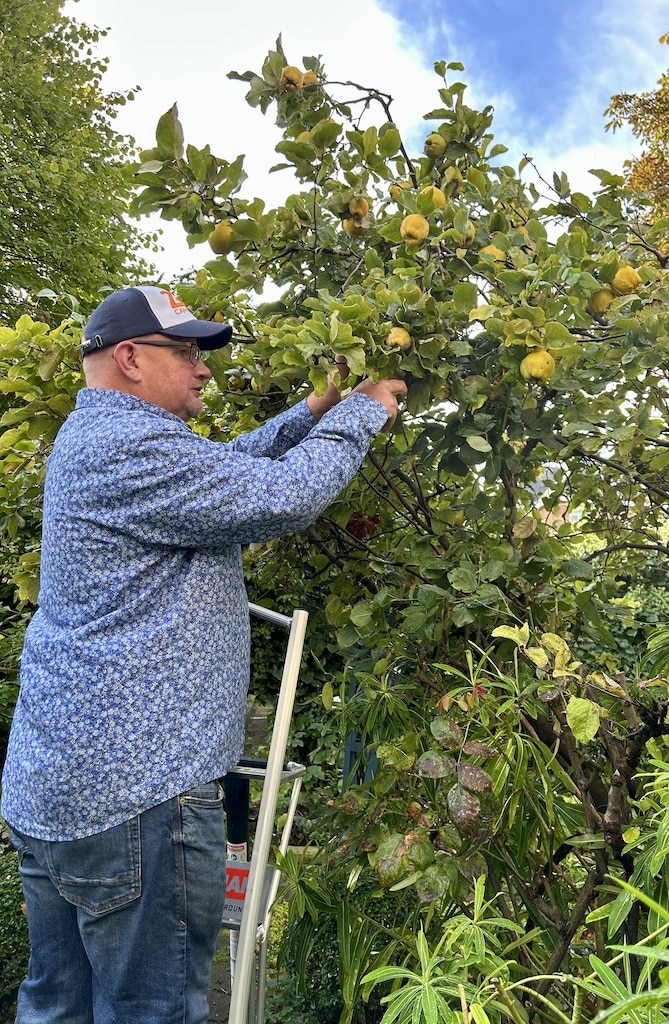
- A crazy-useful tool for this rather ‘messy’ time of year is a hand rake for clearing out detritus from underneath perennials and shrubs that have finished flowering. Do click on the link below if you fancy getting (or giving) one to help with the great autumn tidy-up.
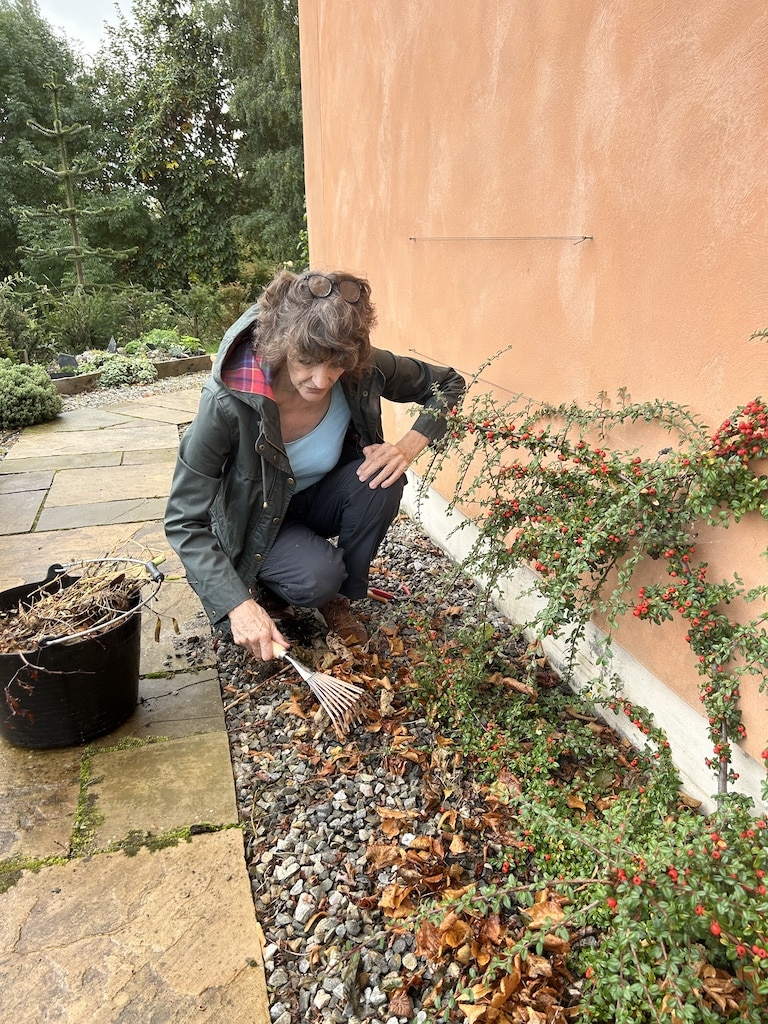
- Finish dividing perennials such as daylilies, geraniums etc. by the end of this month, or you will lose the advantage of them forming new roots in warm soil before the winter sets in in earnest.

You can read Laura’s review of two stunning Highland gardens we visited during our stay ‘oop north’ (Dundonnell and 2 Durnamuck) here. And if it’s easier for you, why not watch the video here?
A perennial plant that flowers in mid- to late-autumn doesn’t often have shelf-appeal for the
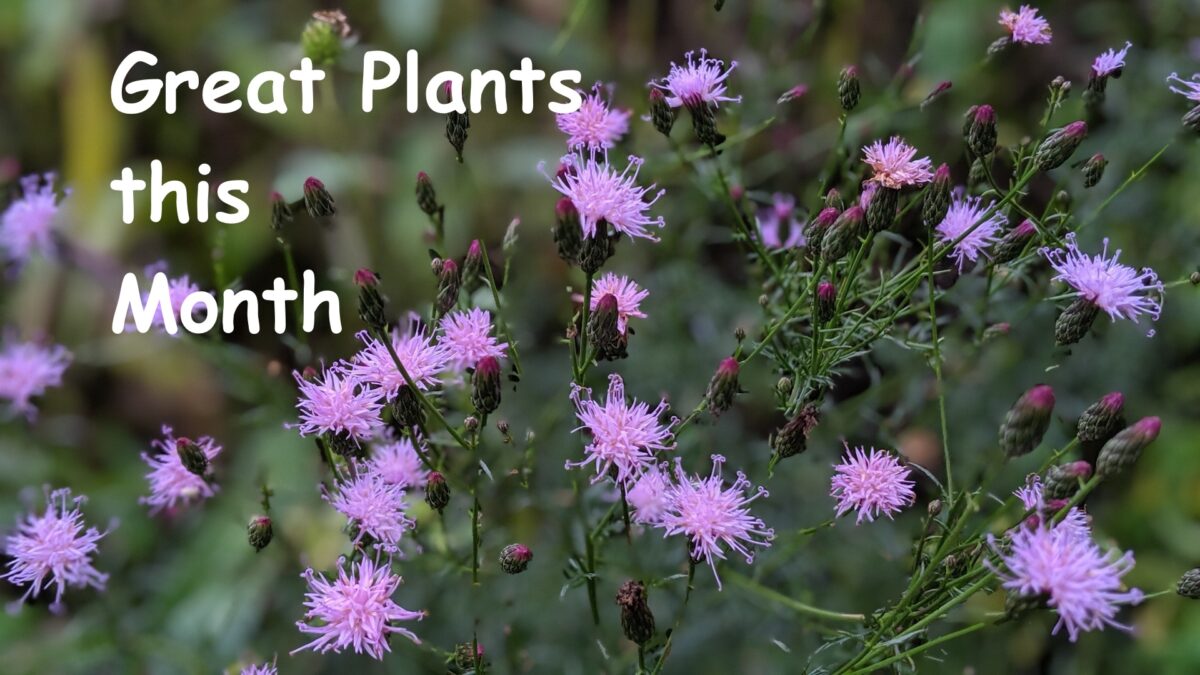
You can buy those ridiculously handy hand rakes here and on our ‘great offers’ page which has plenty of other great ideas too:
A really superior hand rake with lovely fine tines and little bobbly bits at the end to protect delicate plants.
It's beautifully designed by Sophie Conran with a solid brass ferrule joining the head and natural beech wood handle.
If you're buying a hand rake as a gift, choose this one as it comes beautifully presented. A practical and rather beautiful present.
This is the one Caroline uses in her Highland garden.
Very handy for getting under those low-growing bushes and shrubs. Leaves aren't deadly of course, but autumn and winter plants generally look so much better without an underskirt of debris. Very effective tool.
Every one of our subscribers is entered into our latest draw to win a gorgeously-scented reed diffuser valued at £32, but if you know of anyone who would enjoy receiving our weekly postings, please do send them the link to our website and if they sign up, they’ll be entered as well!
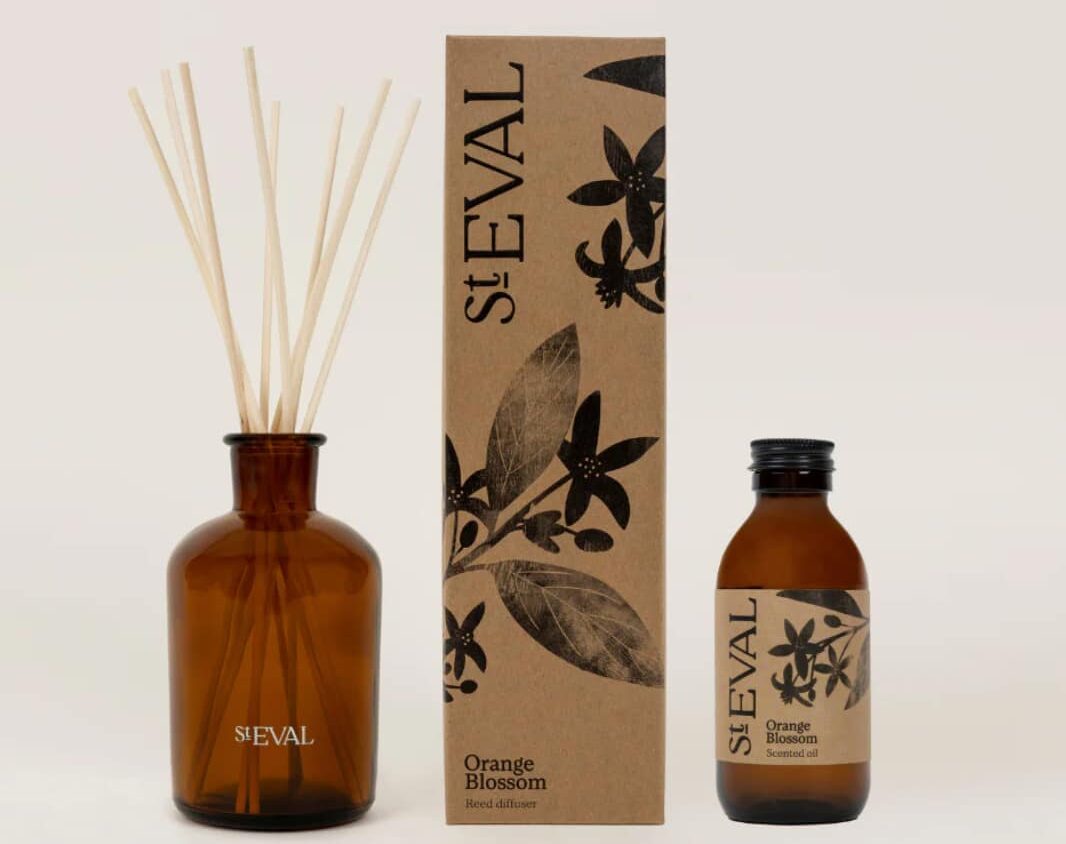
💚 The costs of keeping our site working and safe are going up. We want to go on sharing everything for free without adverts, but if you enjoy our weekly posts, the price of a cup of coffee would be extremely helpful in paying the bills! Thank you 💚

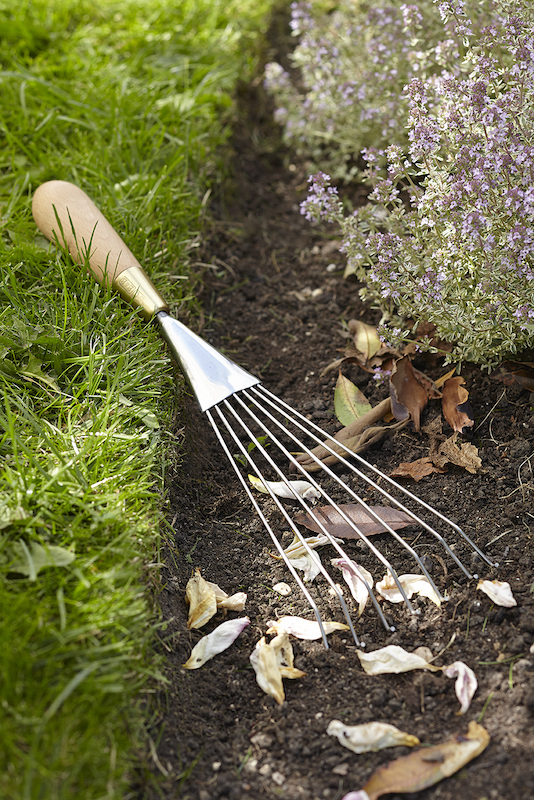

2 replies on “Lessons learned from a Highland fling! Gardening tips for October”
Well done Caroline! Good to hear that you are gaining accolades for your efforts up north. A lovely display of late season colour. Hope you are keeping well.
Sally how lovely to hear from you. We were flattered also to receive a comment from Stan de Prato this morning. So grateful to hear from such eminent members of the Caley! Yes I’m trying to keep my end up, but it didn’t stop me getting a lecture from Laura when we were at Dundonnell – did you watch the video? If not you’ll find it here https://youtu.be/QI7gdlNLV7U?si=ek7ENRUS391-mEJi
She’s such a bossy boots.
I hope Storm Amy didn’t wreak havoc with you all in Edinburgh. It was rather devastating here and a lot of my beautiful mature trees came crashing to the ground – not on the house though, so I suppose one must be grateful.
I hope you are doing well Sally. Bill Tait keeps us up-to-date with bits and pieces from the Caley. I was sorry to hear the lectures have moved to zoom – meeting people was a huge part of the enjoyment, but of course it’s understandable. Covid changed so many things.
If you ever come north, please say you’ll come to visit me Sally, Very best wishes, Caroline